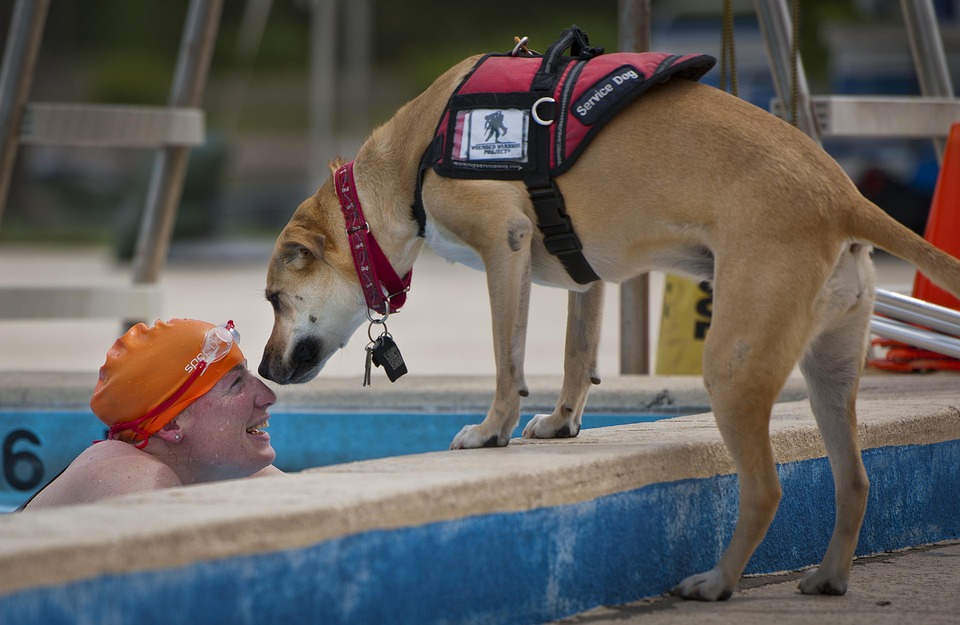Trying to learn the difference between a service animal and an emotional support animal? — Does it really matter, though? It does because there is a huge difference between both categorizations – a service and an emotional support animal. And it is essential for the handler, the animal, and the general public to understand which category an animal falls in.
The Difference Between The Animals
Understanding The Handlers
To understand the difference we first need to know who uses service animals and emotional support animals? Any individual suffering from disabilities can use service animals or emotional support animals for a number of reasons. A person with physical, psychiatric or any other mental disability may use a service animal to perform specific jobs. A service dog can perform everyday tasks for them like pulling wheelchairs, fetching dropped objects, carrying oxygen or life support equipment, alerting a person to a sound, pressing the button of an elevator or reminding them to take their medicine.
An individual with a disability may use an emotional support animal or ESA solely for companionship and because its presence has a positive effect on their life.
Service Animals
As defined by ADA’ i.e. ‘Americans With Disabilities Act’ service animals are specially trained to carry out certain tasks, that are directly related to the handler’s disability. For example, if the handler suffers from Posttraumatic Stress Disorder – PTSD, the service dog can help him during an anxiety attack by giving deep pressure therapy. Service animals can support people with conditions like severe allergy, narcolepsy, epilepsy, and diabetes.
Emotional Support Animals
Emotional support animals – ESA’s are also known as comfort or companion animals. The difference between a service animal and an emotional support animal is that unlike service animals, ESAs are not trained to carry out specific tasks or services.
 They are needed, if the handler requires company to help alleviate his symptoms of depression, ESA can assist the handler by providing affection, comfort, and amusement. Emotional support animals are used in environments like retirement homes, hospitals, prisons and schools.
They are needed, if the handler requires company to help alleviate his symptoms of depression, ESA can assist the handler by providing affection, comfort, and amusement. Emotional support animals are used in environments like retirement homes, hospitals, prisons and schools.
Some places do not consider ESAs as service animals. That means an emotional support animal is not allowed to go everywhere the handler is allowed to go. For instance, a service animal is allowed to come in a restaurant with the handler; in contrast, an ESA is not allowed under the state and federal law as it doesn’t meet the classification of a “service animal.”
To sum up, both of these animals have a unique job which is entirely different from the other, by acknowledging this difference we can reduce the confusion between these two roles.…




 strong and have been long used to control the livestock. They are also good in seizure controls and other such like services. Smaller breeds can not be ignored as they provide quite many services as well. Therefore, the first step would be to relate your dogs breed with the best service suited for them.
strong and have been long used to control the livestock. They are also good in seizure controls and other such like services. Smaller breeds can not be ignored as they provide quite many services as well. Therefore, the first step would be to relate your dogs breed with the best service suited for them. The next step is to train the dog using a professional trainer. Once you tell them the kind of service your dog will be involved in, the rest is their part to play. They will recommend the time after assessing the dog’s capability and speed of grasping things. Just like human beings, some dogs are slow while other are fast. A trainer will also take your dog for public tests until they certify them as fit to engage in service.
The next step is to train the dog using a professional trainer. Once you tell them the kind of service your dog will be involved in, the rest is their part to play. They will recommend the time after assessing the dog’s capability and speed of grasping things. Just like human beings, some dogs are slow while other are fast. A trainer will also take your dog for public tests until they certify them as fit to engage in service.